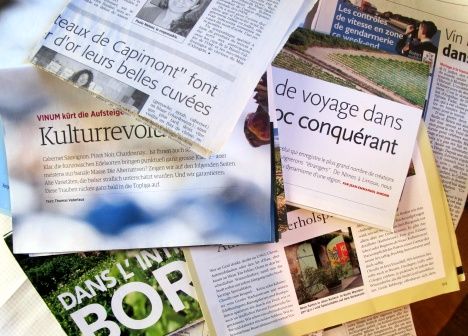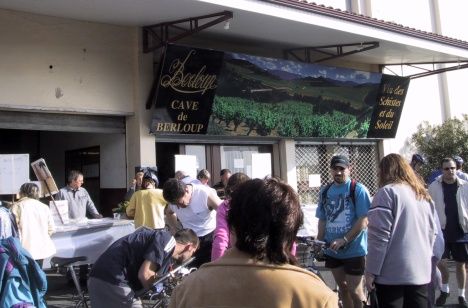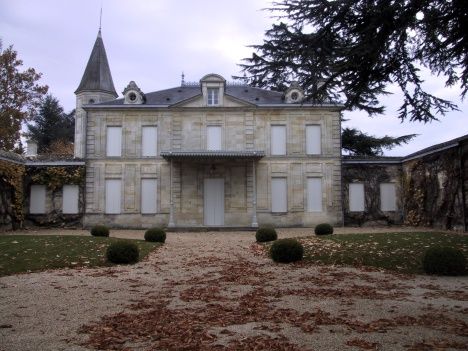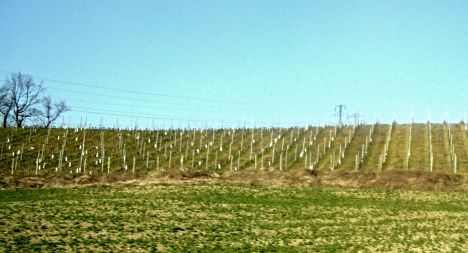A huge pile of articles, news items, statistics, reports and evaluations, collected over the last ten years, is waiting in a dusty corner of my office for the day it will be looked at again. No one is allowed to rummage through it, not even to approach it, the danger is too great that something could disappear from it. At least, that's what I claim whenever even a dust rag - let alone someone from the family - approaches it. A typical journalist's allure - born in a time when there was no internet and googling was a meaningless term. Every now and then (less and less often) I do stumble across the pile, for example today when I wanted to reach for a book just above the newspapers - high up in the rack. I could only do that if I cleared the pile first. In the process, I happened to come across an article - it was probably on top - proclaiming: "VINUM chooses the rising grapes - cultural revolution". Revolution, a signal effect, I read on: "Cabernet Sauvignon, Pinot Noir, Chardonnay.... Are you also that bored?" Indeed, I am very often bored by the same old discussions about the well-known noble varieties among the vines. Reason enough to dig further in the pile.
 |
| Some of the collected articles laid fallow (Photo: P. Züllig) |
In fact, I find enough ideas for at least 100 more columns. For example, in the "Midi libre" of 28 July 2007 it says: "Balades vigneronnes en 'terre de loup' pour accros au terroir" ("Winegrowers' walk to cross the 'territory of the wolf'"). And I remember again how we drove very early one Sunday morning to the small winegrowing village of Berlou, south of the Cévennes, to walk through the vineyards. In the car park, people with shiny, colourful suits, as if cast on the body, got out of every car and got bikes ready to go. It was only then that I noticed that there were three letters behind the word Balades: "VTT", which means "vélo tout terrain" or mountain bike. So I got to know Berlou on a long walk, its vineyards, its vines, its wines, while my 400 or so fellow Baladists pedalled through the vineyards and probably didn't get much of "le terroir de schistes qui participe à la typicité de ses vins" (the slate that is typical of the wines of this terroir). Actually, I wanted to tell you here how excellent wines are made in the Languedoc hinterland that are anything but boring. But that never happened until today. The next documents quickly covered up the paper souvenir.
 |
| Start of the Randonée V.T.T. in Berlou (Photo: P. Züllig) |
Six torn-out pages of the "Revue du Vin de France" present a "Carnet de voyage dans le Languedoc conquérant", i.e. a travel diary of "immigrant" winegrowers in Languedoc. "Conquérant" means conqueror, but you don't have to take it so literally. In fact, in no other French wine region have so many "étrangers" (foreign) winegrowers settled and established new wineries or brought old ones back to life as in the Languedoc. The route begins shortly after Nîmes, leads to Pic-St-Loup, to St-Saturnin, via Montpeyroux to Cabrières, Pézenas, Faugères, Berlou (there we have the village again!), St-Chinian, Béziers, into the Minervois and zigzags on to Limoux and Malpère. There are about 40 wineries listed along the way - all immigrants! I had planned to drive along the route and visit as many of the winegrowers as possible. But then I put the article on the pile, that was in 2003, the date at the bottom of the pages proves it. But that didn't happen either. The pile continued to pile up, almost daily I add new articles. For example, an "Enquête" (investigation) "dans l'intimité de Bordeaux" from 2011, also in the "Revue du Vin de France", came between the intention and the execution. It invites you (freely translated) to "get to know the architecture, the landscape, the cuisine, the way of life and to discover some secrets of the most famous wine region in the world". It reveals which famous families still live in their vineyards (châteaux) or have long since moved out because it is hardly possible to live there - in the old, venerable, often very splendid houses. The old châteaux have largely become places of representation. I have to look into this and approach many of the wineries from the back.
 |
| The historic home of Cheval Blanc% today in the backyard of the new château (Photo: P. Züllig) |
But even as I read the article, a new mystery suddenly emerges, wrapped up in the simple question: "Qui est Victor Louis?" (Who is Victor Louis?). Is it necessary to know? I look it up, or else: I google. The answer for the very curious: he was an architect in the 18th century who built the Grand Théatre de Bordeaux, but also many wineries in the region. He was not the only one to build in the Bordelais, his students also left many traces. So let's go: in search of traces! So far, that hasn't happened either. Many, too many new suggestions have piled up. Topics that are far closer to me, at least geographically. A journalist in "Vinum" suggests discovering Geneva in the fast lane (article from 2004): "When you think of Geneva, you think of the UN, watches, the motor show or the Jet d'Eau, but hardly of wine The author is credible, because it is Thomas Vaterlaus (today editor-in-chief of "Vinum" Switzerland) who already wrote that about the "boring wines" (see at the beginning of this column). Where he is right, he is right, the wine journalist from Switzerland. You really should go to the wine villages (Chouilly, Russin, Dardagny, Lully or Cologny) to get to know those Swiss wines and their origins that are located in the very west of Switzerland. Seven years later, I still haven't been to the Geneva wine regions, a special issue of "Vinum" is published, which promptly ended up in the pile again: "Geneva wine has many faces". And I have never seen them before, these faces...
 |
| Whizzing past the vineyards of Geneva on the train (Photo: P. Züllig) |
Of course, I have already drunk some Geneva wines, recently with my German wine friends a Gamaret from the Domaine Grand'Cour, which revealed to me that excellent wines can also be made from newly bred vines.
So the circle is gradually closing. There are still several hundred collected articles in between; they are nothing more than suggestions, sources for quotations or statistical data that could someday lead to a column or their own reflection. The subjunctive is justified here, for there is so much collected waiting that even a seasoned collector (in this case me) cannot find the time to even sift through the collection. They are thematic flashes (lightning and thunder have long since passed) that could be reported on sometime, somewhere (here, for example) and somehow. At least, if one has the claim to cover the wine world as broadly and as well as possible in words and pictures. I have given up this claim in resignation - the newspaper push is witness - , I got stuck "between vines and oars" (another article in the "Schweizerische Weinzeitung"), I was amazed to learn that there is supposed to be a "Bordeaux, embrouillé et paradoxe" (jumbled and paradoxical Bordeaux); I did not sympathise when the "AOC Schweiz: a pincer birth" became, and I have yet to drink the "red wine that comes from the depths".
Instead, I have been faithfully writing this column every fortnight, which appears (usually) nicely on time on Monday, for more than eight years now, the next time it will be the 200th. They are "stories from the everyday life of a wine collector, wine drinker, wine statistician, wine lover" (as I wrote in the first column). Now I know: they are also stories of a pile leader who tirelessly escapes the pile because - until today - he is never "bored".
Sincerely
Yours/Yours